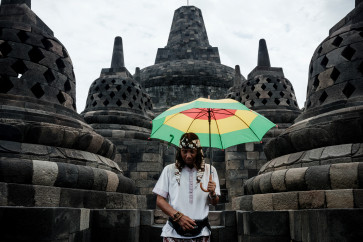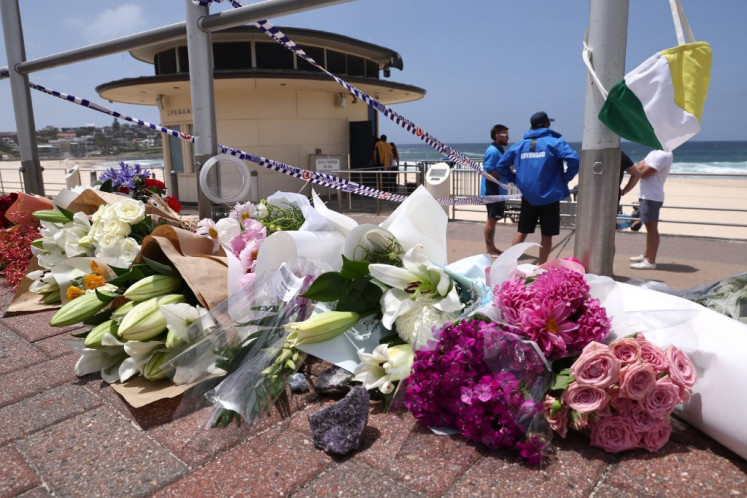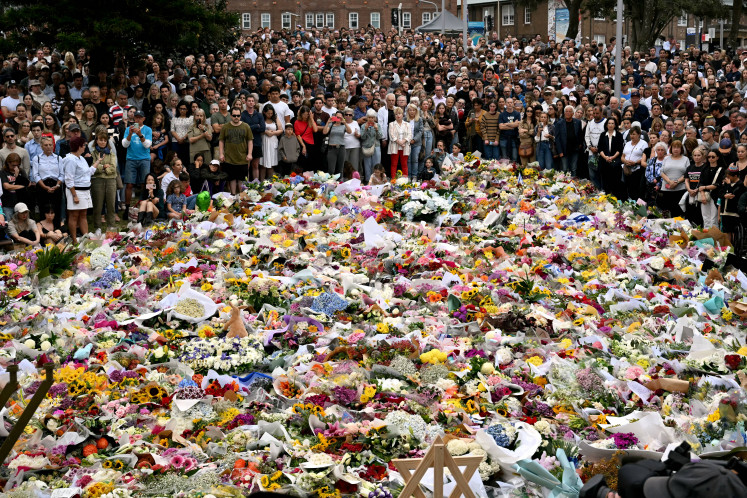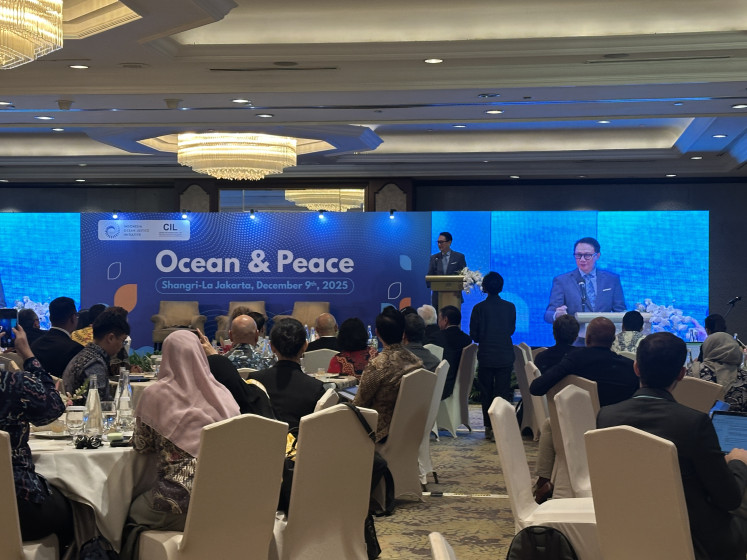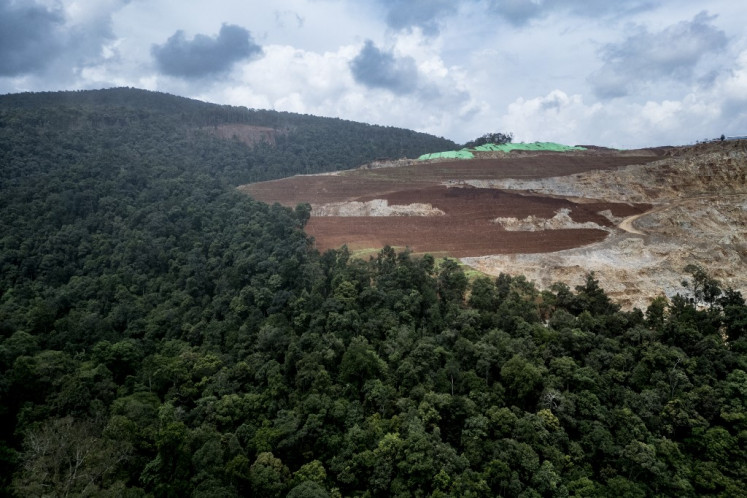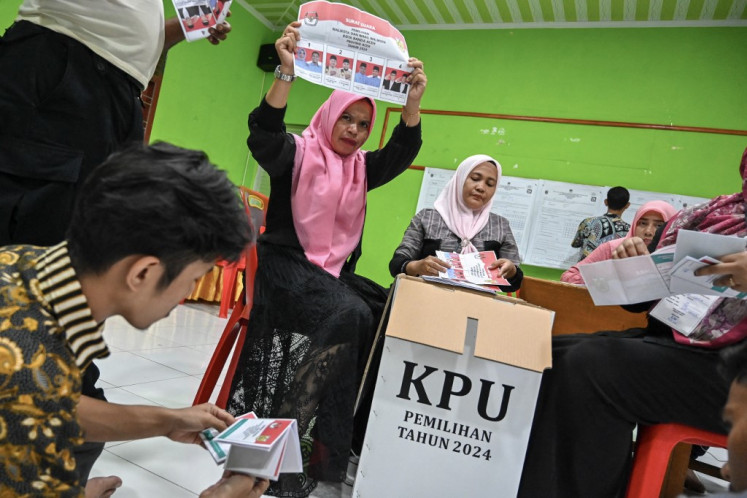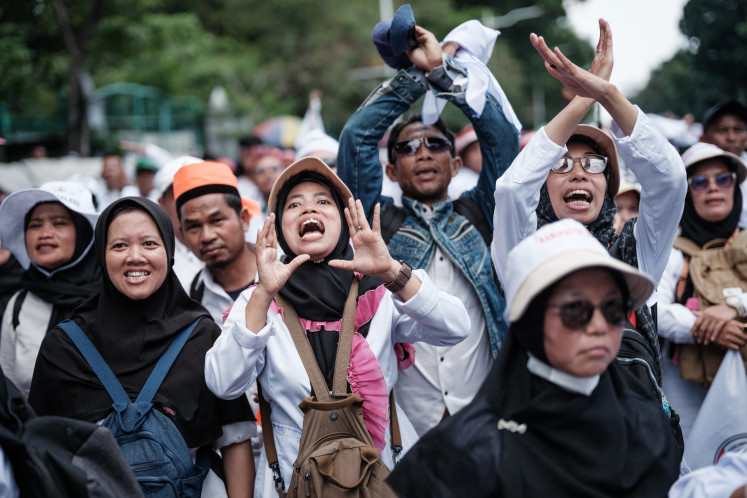Popular Reads
Top Results
Can't find what you're looking for?
View all search resultsPopular Reads
Top Results
Can't find what you're looking for?
View all search resultsGaza children gradually return to school after two years of war
More than 25,000 schoolchildren had already joined the agency's "temporary learning spaces", while some 300,000 would follow online classes, according to the United Natons agency for Palestinian refugees.
Change text size
Gift Premium Articles
to Anyone
 A Palestinian boy takes notes on his notebook at a school in the Nuseirat refugee camp, in the central Gaza Strip, on Oct. 26, 2025, after a United States-brokered ceasefire came into effect earlier in the month. With Gaza's education system shattered by two years of gruelling war, UNICEF's regional director said on Oct. 23 that he feared for a “lost generation“ of children wandering ruined streets with nothing to do. (AFP/Eyad Baba)
A Palestinian boy takes notes on his notebook at a school in the Nuseirat refugee camp, in the central Gaza Strip, on Oct. 26, 2025, after a United States-brokered ceasefire came into effect earlier in the month. With Gaza's education system shattered by two years of gruelling war, UNICEF's regional director said on Oct. 23 that he feared for a “lost generation“ of children wandering ruined streets with nothing to do. (AFP/Eyad Baba)
T
he United Nations agency for Palestinian refugees (UNRWA) announced this week that following the start of the ceasefire Gaza, it was reopening some schools in the territory, with children gradually returning to classes.
UNRWA chief Philippe Lazzarini said on X Tuesday that more than 25,000 schoolchildren had already joined the agency's "temporary learning spaces", while some 300,000 would follow online classes.
At Al Hassaina school in western Nuseirat in the central Gaza Strip on Saturday, classes had just resumed despite the shortage of available classrooms. Warda Radwan, an 11-year-old student, said she was looking forward to returning to her learning routine.
"I am in sixth grade now, but I lost two years of schooling because of displacement and the war," she told AFP.
During the two-year war between Israel and Hamas, Al Hassaina, like many other UNRWA facilities throughout the territory, became a shelter for dozens of displaced families. Their presence was still visible in the lines of laundry strung across the building's three floors.
Radwan explained that classes "are restarting classes slowly" as the school is emptied of the families living there.
Then, she said, she and her classmates "can continue learning like we did before".
In the school's courtyard on Saturday, young girls lined up for the morning assembly, performing stretching exercises under their teachers' supervision and chanting: "Long live Palestine!"
As classes began, about 50 girls crammed into a single classroom, sitting on the floor with no desks or chairs. They responded enthusiastically to the teacher's questions and eagerly copied the lesson from the blackboard into their notebooks, happy to be back in school after two years.
Another classroom hosted a similar number of older girls in their teens. The conditions were identical: All sitting on the floor with notebooks resting on their laps.
Jenin Abu Jarad, a relative of one of the students, said she was thankful to see the children back in classes.
"Since Oct. 7, there hasn't been any school for our children," she said.
"During this time, all they could do was fetch water, get food, or play in the streets. But thankfully, about a week to ten days ago, schools began reopening gradually," she added.



